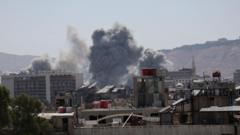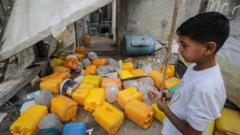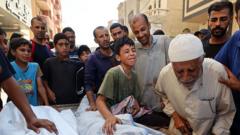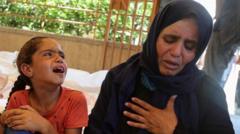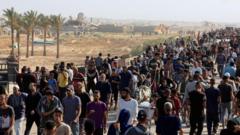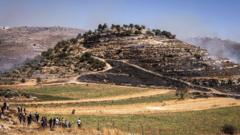The deaths of 15 humanitarian workers in Gaza, who suffered multiple gunshot wounds before being interred in a mass grave, have triggered global outcry and calls for accountability, as conflicting narratives stall peace efforts in the region.
Humanitarian Workers in Gaza: A Tragic Toll Amid Escalating Conflict

Humanitarian Workers in Gaza: A Tragic Toll Amid Escalating Conflict
In a devastating incident, at least 15 aid workers in Gaza were shot multiple times and buried in a mass grave, raising international condemnation and highlighting the perils faced by civilians in conflict zones.
As tensions continue to escalate in the Middle East, the humanitarian crisis in Gaza has taken a tragic turn with the confirmed deaths of 15 aid workers, as reported by the Palestinian Red Crescent Society. Eyewitness accounts indicate that these individuals, who went missing during a U.N. convoy operation on March 23, were discovered in a mass grave showcasing the brutality of the ongoing conflict.
Nebal Farsakh, a spokeswoman for the Palestine Red Crescent Society, emphasized that nearly all the bodies recovered displayed numerous gunshot wounds, an unsettling finding amidst the broader narrative of violence in the region. One of the rescue workers arrived at the grave bound, with hands and feet tied, signaling the grave risk faced by those providing humanitarian assistance in conflict zones.
The bodies were reportedly found alongside destroyed ambulances and UN vehicles, raising serious questions over the conduct of military operations in civilian areas. The initial attack in southern Gaza led to silence from ambulances and U.N. vehicles, terminating with the heartbreaking discovery of the aid workers' bodies days later.
International condemnation has mounted following the U.N.’s remarks accusing Israel of responsibility for these tragic deaths. An Israeli military spokesman countered claims, suggesting that nine of the deceased were Palestinian militants and defending military actions against vehicles that were viewed suspiciously and lacked emergency signals. The conflicting narratives underscore the complexities of the ongoing conflict and the dire circumstances faced by civilians caught in the crossfire.
As advocates for peace push for de-escalation and accountability in the region, the fate of humanitarian workers serves as a chilling reminder of the inherent dangers in providing relief amidst escalating hostilities.


